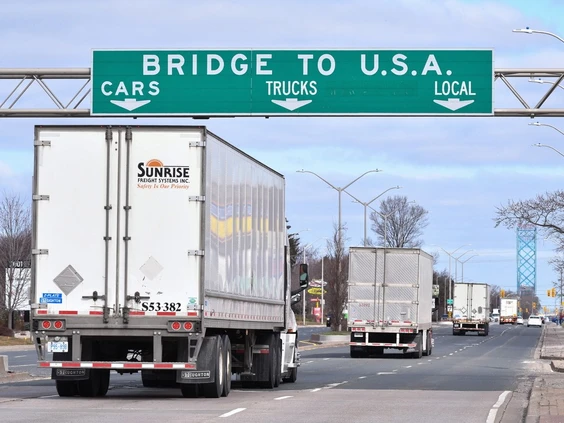Canada needs many more of these skilled workers. Currently, almost one in two truckloads of goods that needs to be shipped is delayed.
The 2022 “Ottawa truck convoy protest,” for all the controversy and severe disruptions, involved people working in an essential Canadian industry, facing substantial challenges at a critical time. From this perspective, the protest was a missed opportunity to acknowledge both the importance of the industry and the challenges facing its workers.
A key issue in the Public Service Alliance of Canada (PSAC) negotiations with the federal government was the demand to work from home. This is not an option available to truck drivers, who play a vital role in the Canadian economy.
Trucking is not sexy. It does not have the allure of “superclusters” or “building back green” or “artificial intelligence.” It is, ostensibly, just putting stuff in big unwieldy vehicles and hauling them across the country and the continent.
The trucking industry plays a central role in providing our food, our smartphones, and our toilet paper. It is the principal way of moving goods across the country and to the U.S., our dominant economic partner. The trucking industry is a critical part of a sophisticated, technologically complex logistics system. It is a vital element of our economy, but one often taken for granted.
Trucking is an essential service, delivered by skilled workers. Drivers operate large cumbersome vehicles and are required to have extensive knowledge of road safety, of the transport system, mechanical skills for emergency maintenance, and the ability to adapt their unwieldy vehicles to shifting road and weather conditions.
Technology is changing the trucking industry and the required driver skills. For example, innovations in telematics include vehicle-to-vehicle communication systems, route-planning applications and other complex scheduling systems. Embedded diagnostics are being incorporated into engine, transmission and other vehicle management systems for monitoring truck performance.
Such developments require increasingly advanced levels of driver skills to operate and maintain these highly complex systems called trucks.
Supply shortages of key goods during the height of the COVID pandemic, continuing in various forms today, are a key factor in rising prices, driving inflation. This is also a function of basic challenges that have plagued the trucking industry for years.
The central challenge facing the industry is missing drivers. It has an estimated gap of more than 25,000 drivers, expected to increase significantly in coming years. The industry has difficulty attracting and retaining them, with recent turnover rates as high as 90 per cent. As a result, almost one in two truckloads of goods that needs to be shipped is delayed.
The leading problems facing the truck-driving profession include low and uncertain incomes, difficult work conditions and lack of respect. Although estimates and regional earnings vary greatly, the national average annual truck-driver salary is close to $50,000 per year; and for long-haul drivers around $63,000 per year. Long-distance truckers are usually paid by the kilometre; the more they drive, the higher their earnings. Delays and wait times, for example for loading and unloading, are unpaid time; and driver fatigue lurks in the background.
Truck driving is also a profession with a high level of risk from long hours on the road, often under perilous conditions, shifting loads that make the handling of trucks tricky, and carrying dangerous cargos such as hazardous chemicals. Add to this the time away from home, family and friends, the unpredictability of a social life, and it all makes for difficult work conditions.
Furthermore, several technology companies, including Google, are putting significant resources into the development of self-driving trucks. While these are not likely to flood our highways any time soon, this adds future uncertainty for a young driver supporting a family on the foundations of a skilled profession.
The government of Canada developed a comprehensive strategy for the transport sector, including trucking; and is investing in skills training. Provinces are also taking steps, with Alberta investing $30 million in driver training. The Canadian Trucking Alliance is working with industry partners to address a wide range of issues, in particular the driver shortage. It has submitted to the federal government suggestions for strengthening this vital industry.
An important factor for truck drivers leaving the industry is feeling underappreciated. The role of respect in a profession performing a vital service should not be underestimated. The Ottawa truckers’ convoy was a missed opportunity to send an important nationwide message to skilled workers in an essential industry under stress. The prime minister chose to “take a knee” in solidarity with one group of protesters. But no senior government representative chose to take the time to “hear the truckers’ song.”
The trucker convoy’s seriously disruptive impact on the city of Ottawa notwithstanding, it was an opportunity to acknowledge the critical role of truckers in Canada’s economy and give visible recognition at the highest levels to their underlying concerns. In leadership, both substance and symbolism matter.


